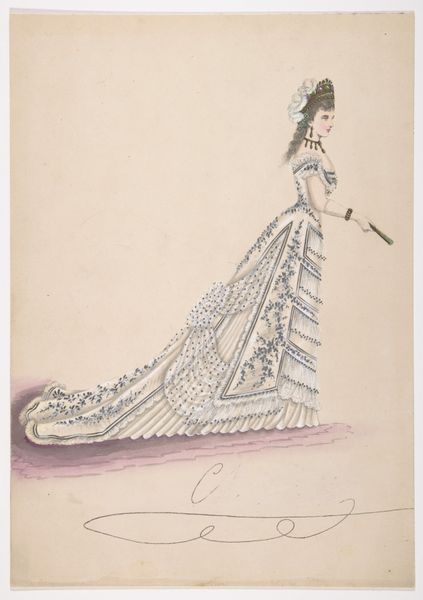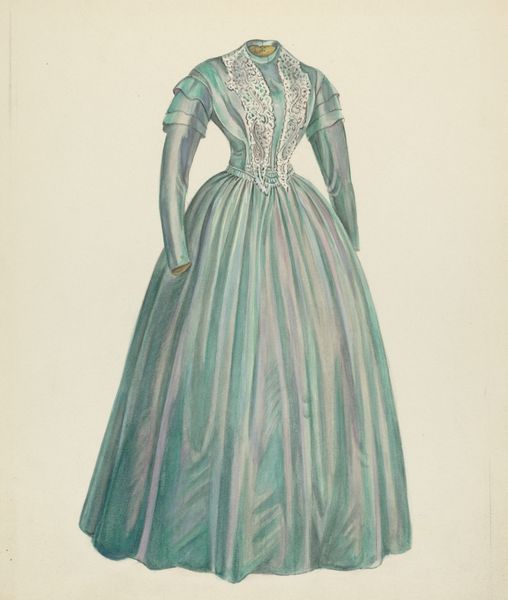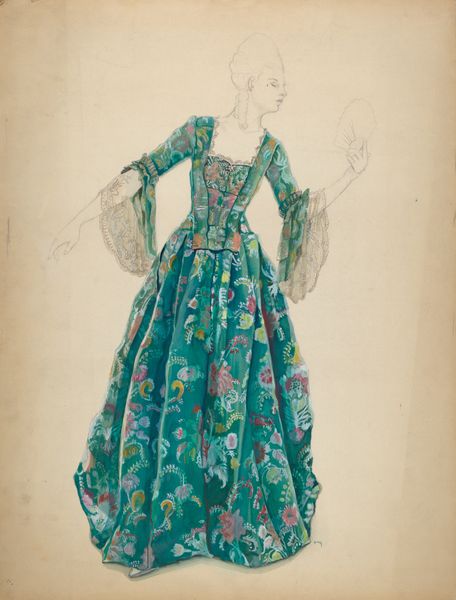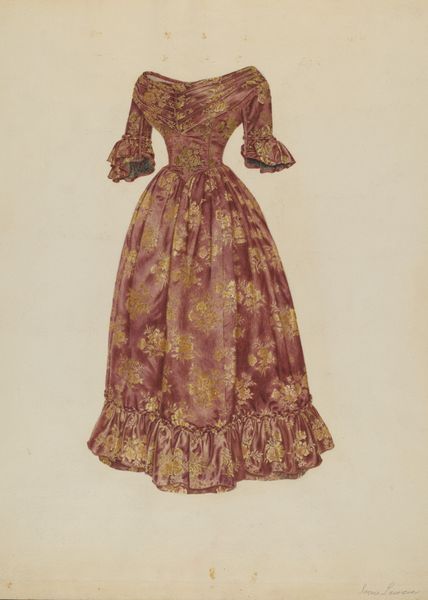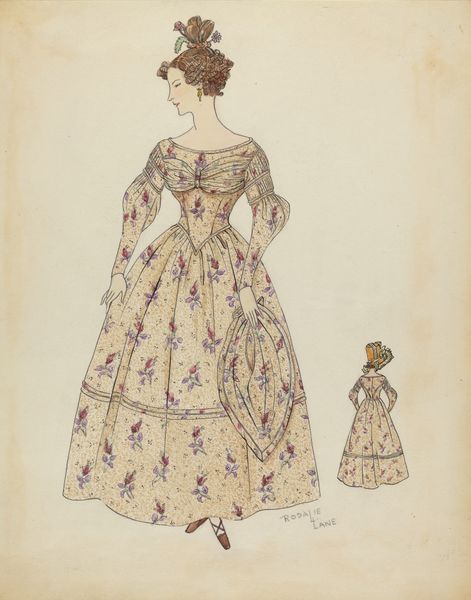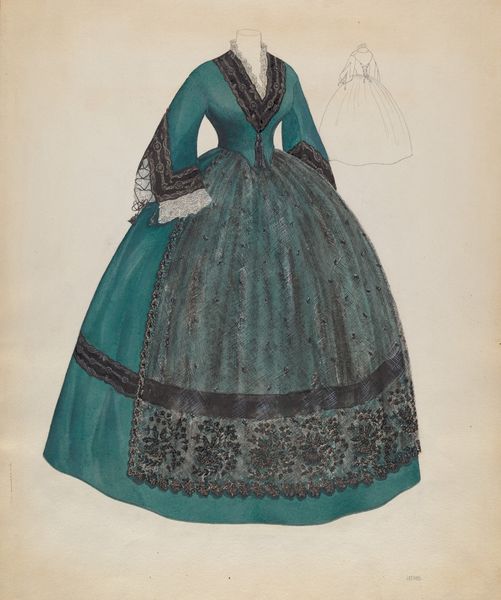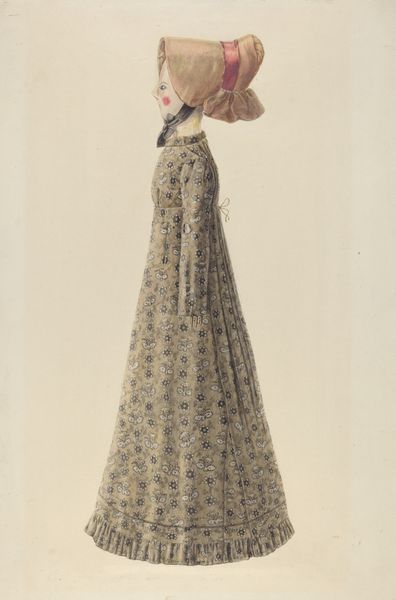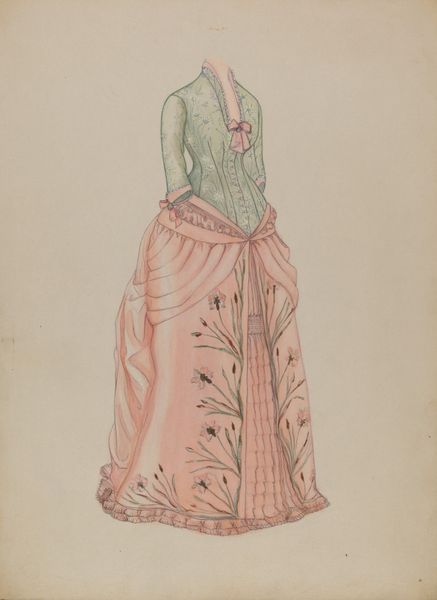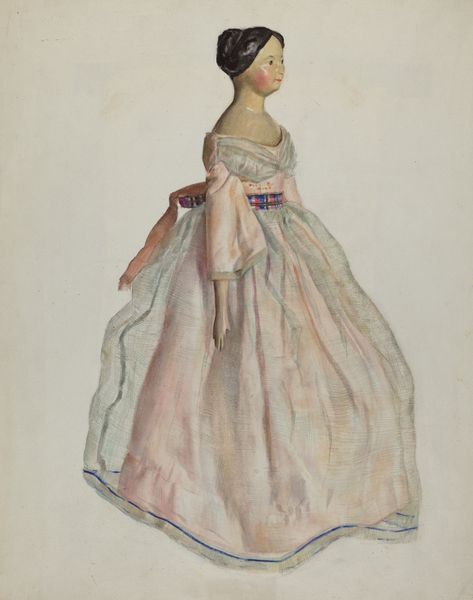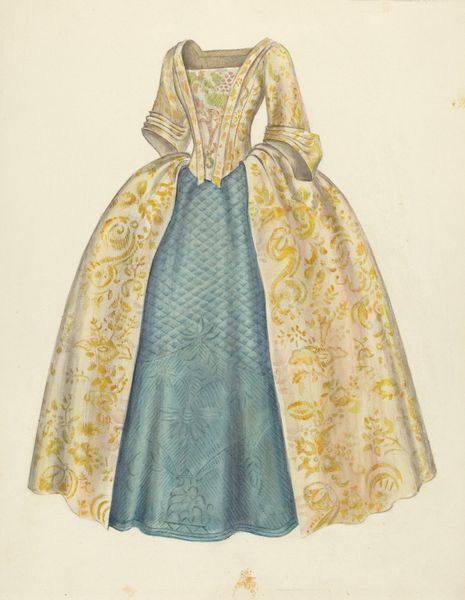
drawing, coloured-pencil, print, watercolor
#
portrait
#
drawing
#
coloured-pencil
#
water colours
# print
#
watercolor
#
coloured pencil
#
romanticism
#
decorative-art
#
dress
Dimensions: sheet: 9 15/16 x 7 3/8 in. (25.2 x 18.7 cm)
Copyright: Public Domain
Curator: A cascade of mint green and frilly lace—it’s arresting! Almost overwhelming in its opulence. Editor: Indeed. This is an anonymous 19th-century artwork titled "Fashion Study: Woman in a Green Dress," and we can see it today in the Metropolitan Museum of Art. The rendering employs colored pencil and watercolor, techniques that were rapidly becoming critical tools for disseminating fashion ideas during this period. Curator: So, beyond just prettiness, there's a documentarian function? This wasn’t simply about aesthetics; it was a form of communication? Editor: Precisely. Visual representations such as this served a vital public role in establishing norms, conveying aspirations, and codifying the spectacle of elite social life during the 1800s. Note how much importance is granted to detailing every lace tier, every bow. The artistry lies in showcasing manufacturable design. Curator: All that exquisite detail almost begs to be deciphered, doesn’t it? The back view of the dress—uncommon for formal portraits—hints at the wearer’s distance, presenting her as a symbol rather than a specific person. She is standing at a distance as if this image were part of some kind of catalogue. What might her pose and costume tell us about societal expectations, the desired effect she’s meant to embody? Editor: Costume, here, becomes an armour and declaration of intent, reflecting a confluence of industry, art, and consumer desire. What I find fascinating is the interplay between individuality and conformity that it suggests. The wearer gains status by conforming to a demanding set of standards. Curator: So the very act of confining oneself can symbolize liberty, if the perfect style grants entrée into powerful social circles? It all starts to echo coded messages—the language of status. Editor: It is quite something to reflect upon how visual messaging regarding access and hierarchy has shifted from exclusive handcrafted items like the depicted to a mass market of style and consumption now readily spread across a variety of outlets. Curator: Food for thought as we turn the corner… and perhaps adjust our own frills.
Comments
No comments
Be the first to comment and join the conversation on the ultimate creative platform.

